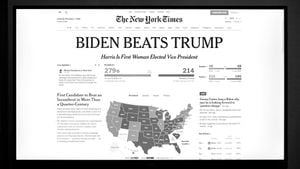Washington, D.C. has just welcomed its first-ever Go-Go Museum and Café, a vibrant tribute to the city's rich musical heritage. The grand opening ceremony, held at the historic Anacostia neighborhood on November 18, 2024, was marked by joyful celebrations, performances, and heartfelt reflections. This endeavor seeks not only to honor the genre of go-go music but also to serve as a community hub where culture, history, and creativity will thrive.
The event, attended by Mayor Muriel Bowser, local artists, and community leaders, featured speeches underscoring the significance of go-go music. "This museum is about the culture of our city, our artistry, and our history," stated Ronald Moten, one of the museum's co-founders and prominent community advocate. The ribbon-cutting ceremony was not just the opening of another venue; it symbolized the recognition of go-go music as the city's official sound—an honor cemented by the Go-Go Music of the District of Columbia Designation Act of 2020.
The celebration coincided with Go-Go Preservation Week, running from November 17 to November 23, emphasizing the need for continued recognition and preservation of this quintessential D.C. sound. Moten expressed his excitement over the museum and its potential impact, saying, "We’ve never had anything here in Southeast built by the people, showcasing our talents."
Located at 1920 Martin Luther King, Jr. Avenue, SE, the Go-Go Museum and Café aims to not only display memorabilia and artifacts tied to the genre but also to create interactive experiences for visitors. Interactive exhibits will allow attendees to relive some of the most pivotal moments of go-go history, enhancing their appreciation of the genre's evolution. The collection includes outfits worn by famed performers like Chuck Brown and memorabilia from legendary bands such as Rare Essence and Trouble Funk.
To build its connection with the younger generations, the museum plans to offer workshops and classes focused on sound engineering, photography, and of course, how to perform go-go music. "We want to train our young people not just about the music, but also about potential career paths within the arts and beyond," said Moten.
The grand opening also witnessed celebratory performances from local go-go bands, most prominently featuring Anwan Glover, known as Big G, who was appointed the Musical Director of the museum. He shared his personal connection to go-go music, emphasizing its life-changing impact. "This music saved my life; it helped me navigate through tough times," Glover declared, inspiring attendees.
Alongside Glover, the event included performances from the local bands Junkyard Band and Backyard Band, who electrified the atmosphere with their infectious rhythms, urging attendees to dance and celebrate the art form. The community-oriented focus of the museum allows it to be more than just a space to admire artifacts; it’s positioned to be a sanctuary for artistic expression and growth.
Recognizing the importance of providing safe spaces for at-risk youth, the museum will feature resources like late-night recording sessions where young people can engage with music and learn production and recording skills. Moten added, "We’re providing them with tools to grow within their own communities." He intends to bridge gaps by introducing youngsters not only to the arts but also to culinary pursuits through the café, which will serve as another avenue for learning and engagement.
At the opening ceremony, Wiley Brown—son of the legendary Chuck Brown, often heralded as the Godfather of Go-Go—took the stage and reflected on what his father's legacy meant for the local community and the museum's importance. With tears of joy, he remarked, "I know he’s smiling down on all of us right now because we’re all keeping this going. It’s all about love," referring to the bond the community shares through music.
This celebration of go-go also had political significance. D.C. Council member Kenyan McDuffie, who sponsored the legislation declaring go-go as the city’s official music, remarked on the genre’s growing influence and recognition across broader platforms. “Our music inspires generations and now receives the national attention it deserves. This museum will aid not just preservation but also the celebration of our culture,” he stated with pride.
Attendees couldn’t help but feel the heartbeat of the city pulsate through the songs and dances, reminding everyone of the unique cultural fabric woven through decades of community interaction and artistic development. The neighborhood of Anacostia, historically significant and long underexposed, is now firmly positioned to be at the forefront of D.C.’s musical narrative.
The Go-Go Museum and Café isn’t merely another stop on D.C.'s cultural map—it's set to be the epicenter of go-go's revival, ensuring future generations appreciate and uphold the genre. With plans already underway for expansions which will include new exhibits and performance spaces, it appears this cultural landmark is just getting started.
For many residents and visitors alike, the Go-Go Museum and Café serves as both a celebration of past achievements and a platform for current artists and enthusiasts to engage, learn, and create. The iconic sound of the city is alive and well, firmly rooted within the walls of this newly minted institution and within the hearts of those who cherish its soulful rhythm.
Every visit to the museum will immerse guests not just in the history and artistry of go-go but also encourage them to partake actively in D.C.’s cultural legacy—keeping the rhythms beating strong for the years to come.



